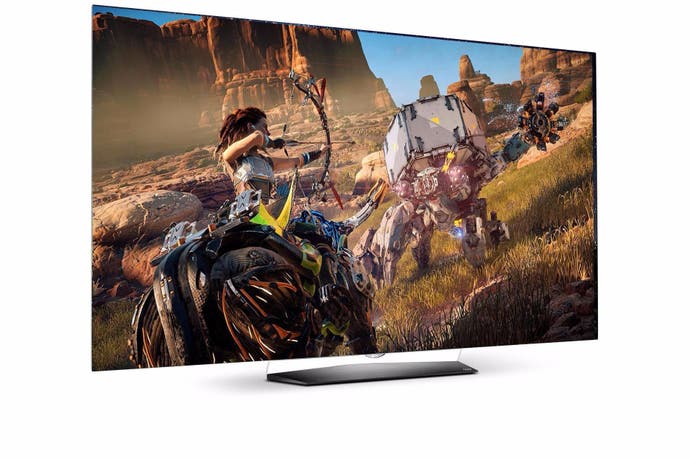LG OLED B6 4K TV review
A fantastic high-end display finally drops to an affordable price.
What is the best 4K screen for gaming? In terms of performance for the price, the Samsung KS7000 and KS8000 are difficult to beat, but as good as they are, there are compromises. Meanwhile, in the background, LG's phenomenal B6 OLED TV has gradually dropped in price, while boosting its gaming credentials with a low latency game mode update. It still costs a lot more than the Samsung, but it is - in our opinion - the new price vs performance king, to the point where all the Digital Foundry team members who've upgraded to a 4K screen at home have opted for this particular model. John and Rich have indeed put their money where their mouths on with this one.
Retailers are making way for LG's more expensive 2017 line-up of displays, which do feature some improvements over this display, but right now we have a window for getting a phenomenal 4K screen at a reasonable price point, while stocks last. And as things stand, regardless of its age, the B6 still manages to deliver one of the best 4K pictures of any UHD TV on the market right now, boasting class-leading black levels, and precise HDR handing on a pixel level that no FALD (full array local dimming) LCD can match.
Combined with the new low latency mode for gamers, the B6 is arguably the best 4K TV available for the money right now, and provides a superior viewing experience over competing high-end LCD sets in most areas. Bright imagery is more faithfully displayed in HDR content on the top end LCD displays - such as the Samsung KS9500 and Sony ZD9 - but overall, you are getting seriously impressive picture quality at a much cheaper price than those outstanding models.
Of course, LG's new 2017 OLED range delivers improvements so it's tempting to wait for before splashing out on a 4K upgrade. Improvements in near black performance, lower input lag, and more accurate HDR reproduction all bring about tangible refinements to the already excellent images 2016 B6 output, but this comes at a cost. The new models start at around £2999 for a 55-inch display - and while the resulting image quality is a step up, not everyone can afford to drop three grand on a TV. The B6 still delivers all of the advantages that only OLED offers right now, and we'd say that the price is right now.
- Buy the LG B6 OLED from Amazon with free shipping
The 55-inch B6 features a sleek form factor and minimalist design. The glossy panel is attached to a brushed metal styled base via a transparent stand, which gives the impression of the TV floating in mid-air when viewed in a dark room. All the electronics are located at the bottom of the panel with inputs around the back and sides of the unit. The B6 features 4x HDMI 2.0 inputs, 3x USB inputs (1x 3.0), an optical out, Ethernet port, and a 3.5mm headphone jack. Analogue connections are also supported, but require break out cables to hook up legacy equipment. The B6 also comes with LG's smart remote, which uses 'waggle'-style motion sensing and a pointer-based system for navigating the menus. We found it comfortable to hold and very intuitive to use, with the option to combine traditional directional button navigation with pointer when moving through the menus.
LG's smart TV platform is also excellent, featuring all the main catch-up and streaming services, such as BBC iPlayer, Netflix and Amazon Video. The Plex app is also reasonable, though not quite as attractive or as fully featured as the Android TV alternative. Menus are clearly laid out and new apps are easy to find, allowing for comfortable browsing across catch-up services and other on-demand media.
4K and HDR is supported on Netflix and Amazon Video, with the former hosting Dolby Vision content (check out Marco Polo for a spectacular Dolby Vision presentation). The TV detects when a 4K and HDR signal is present, ensuring that we have the best image quality possible with all the streaming services we tested. Media playback is also supported via USB for videos, photos, and high dynamic range content, so the LG smart TV platform certainly delivers a very comprehensive experience for those more interested in the multimedia aspect of the display. Our only quibble here is that 4K, 60fps content is only supported with the HEVC codec, not h.264.
Picture quality
When it comes to delivering images with life-like levels of depth and three-dimensionality, no backlit LCD technology can match OLED, and the B6 does a great job here. The self-emissive characteristics of the panel allow for individual pixels to be controlled precisely so that bright and dark details can co-exist on screen without compromising contrast, allowing for deep inky blacks in both standard dynamic range and HDR content. This is immediately apparent upon seeing the B6 in action. Images take on a more life-like appearance compared to local dimming LCDs. Elements that are supposed to appear a deep shade of black are suitable dark and inky in night-time scenes, while street lights and other can appear bright and punchy without affecting the contrast performance of the screen.
This is a level of performance that goes beyond CRT and plasma displays and the results are spectacular. Combined with native 4K resolution, wider colour gamut, and HDR, the viewing experience is incredibly immersive when gaming and watching movies due to the stellar contrast performance on offer. Shadow details are also resolved to a decent standard despite the inky black levels on offer, although unfortunately there is some visible noise on information just above black that can stick out in darks scenes in some content.
This isn't an issue when using the B6 in a bright daytime environment, but at night or in a dimly lit room posterisation artefacts are visible at times. Thankfully, these can be reduced by lowering brightness and clipping some mild near black detail (level 17), providing cleaner looking black levels - but this comes at the expense of mildly crushing shadow details in this area.
The TV's auto brightness limiter (ABL) also causes bright scenes and images with a lot of white content to feature an unwanted colour shift as the brightness level is slowly reduced. Title screens and menus are mostly affected here, though bright scenes that stay on screen for extended periods are also affected to varying degrees - something which is more noticeable with HDR content. These are two areas where 2016 OLED technology falls short, and while we didn't feel these issues impacted on our enjoyment of the B6 very often, the viewing experience isn't quite as consistent compared with other high-end OLED and LCD TVs in these areas.
Despite a few hiccups the B6 still delivers a reasonably balanced image after a basic set-up when using the two ISF picture modes. Aside from a red bias across the greyscale, images otherwise appear rather natural due to the high level of colour accuracy in these modes without needing too much tweaking to get right. Calibration is limited by the greyscale and colour management controls introducing artefacts on screen, but thankfully a few adjustments to hue and the two-point greyscale deliver a highly accurate picture that allows for films and games mastered to BT 709 to appear lifelike and natural across a variety of scenes without incurring any unwanted side-effects. And when paired with the B6's outstanding black levels and contrast capabilities, standard dynamic range content has a level of impact that no LCD with local dimming can match. Games like Ratchet and Clank in SDR mode often look like they are running in HDR with the superb dynamic range on offer.
In other areas, viewing angles are also excellent, with very little in the way of colour shift when viewed off-axis. A mild magenta tint is visible when moving to extreme angles, though the impact on picture quality is minimal compared to the large shifts in contrast and colour saturation found on VA LCD panels. Motion handling is a class above VA LCD displays despite motion resolution coming in at just 300 lines. There is less in the way of smearing during fast-moving scenes in first-person shooters and fighting games running at 60fps, resolving more detail when the action is kicking off. It's only when playing titles such as FIFA or Pro Evolution Soccer where these limitations are more noticeably felt. The sample and hold driving method (where one frame is held on screen until the next one is displayed) creates some mild smearing when there is lateral movement on screen. Plasma still has a considerable edge here, but LG's OLED does a reasonable job of reproducing 60fps motion on screen with the limitations of the chosen panel driving method.
Gaming performance
The combination of wide viewing angles and decent motion handling make the B6 a great candidate for gaming, and switching over to game mode also gives us low input lag that allows for a responsive and enjoyable experience in both 30fps and 60fps titles. With the latest firmware installed, input lag drops down from 54ms to 27ms, resulting in a more responsive experience.
Fighting games and first-person shooters running at 60fps feel snappy and play well, with the results coming very close to matching the 21ms found on Samsung displays. It's a massive improvement over the 54ms latency found in calibrated modes, such as ISF (Dark Room), where fast action games can feel a little compromised by display latency.
It's also worth mentioning that input lag is higher with older firmware (and HDR game mode is also unavailable) with calibrated ISF modes coming in at 68ms and game mode at 44ms. So be sure to check out the 'About This TV' section in the menus and ensure that you are on at least firmware 04.31.10 to ensure you're getting the lowest possible input lag across both SDR and HDR modes.

Our only real issue with game mode right now concerns colour accuracy. This preset is permanently stuck in wide colour gamut mode, with no way of adjusting this back to standard - the option is greyed out and no calibration controls are available. This results in visibly oversaturated colours with SDR content where games appear overcooked and quite unnatural. On the plus side games are more forgiving than movies when it comes to errors in colour, so for those not fussed about viewing balanced images, it's still possible to enjoy gaming on the B6. However, with many triple-A titles mastered to industry standards (D65 and BT 709) it's disappointing that it's not possible to view them as intended on the B6 while enjoying low input lag - whereas on Samsung and Panasonic displays, game mode still produces highly accurate images. Thankfully, HDR game mode is unaffected with normal (auto), extended, and wide options available.
Of course, it's possible to enjoy accurate images when using both ISF Dark Room and ISF Bright Room Modes, so we'd advise choosing these presets for watching movies and TV shows. Input lag here comes in at 54ms, so gaming feels quite sluggish - though not unplayable - but picture quality is more balanced than game mode, and the out-of-the-box setting here provides an accurate image without the need for much tinkering at all. And as a result, image quality when gaming really shines, though you pay the price in terms of additional display lag. The extent to which you'll notice this depends on the user - and the content.
HDR performance
High dynamic range is one of the key upgrades that comes with a 4K display, allowing for images that appear closer to what the human eye sees by delivering higher levels of brightness, a wider colour gamut, and more detail throughout the entire range. The ability for the B6 OLED to dim each pixel individually allows for superb contrast and depth across both bright and dark scenes, which results in images featuring more 'pop' compared to most LCD panels.
There's no haloing or blooming either, due to the lack of a backlight, so bright elements such as explosions and spot lights don't affect areas of the picture that are supposed to be dark. And as such, the experience remains consistent and mostly free of unwanted artefacts, besides a slight dimming of the screen when bright imagery is displayed for extended periods, which is gradually applied. The excellent contrast performance also ensures that HDR content always features plenty of depth and three-dimensionality in both dimly lit and bright scenes.
With the latest firmware update installed, the B6 does a very good job of delivering a detailed and punchy HDR image that appears life-like and natural. Peak brightness comes in at around 560 nits on a 10 per cent window, which falls short of the 1200-1800 nits found on Samsung and Sony's top-end LCDs. However, the absolute black levels and per-pixel accuracy in terms of dimming mean that highlights still appear extremely bright and impactful despite the lower peak brightness on offer.
That said, these elements lack the same level of punch compared to the best local dimming LCDs (such as the Sony ZD9 and Samsung KS9500), due to lower peak brightness and reduction in colour volume, where colours don't appear quite as bright and fully saturated. Information above 1000 nits is also clipped on the B6, so the brightest parts of the image are missing the finest details across elements such as explosions and lens flare around the sun. This is most visible during the combat scenes in Mad Max Fury Road on UHD Blu-ray and in Uncharted 4's multiplayer, where fire effects featured harsher gradients when displayed on the B6 compared to the KS7500, as colours are clipped between 650-900 nits on the OLED.
Even so, the presentation is still excellent on the B6 and performance outside of displaying bright highlights is superior to local dimming LCDs, with the per-pixel precision and class leading native contrast of the panel producing some stunningly life-like images across 4K games and movies.
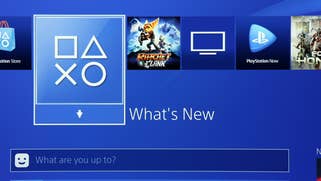

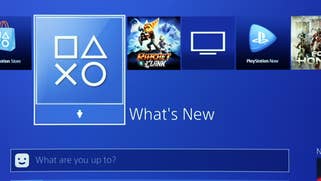







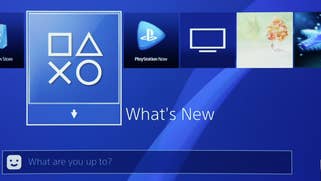
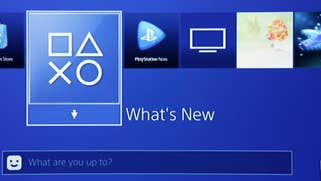



While PS4 Pro and Project Scorpio will eventually lead to more native 4K games on consoles, right now 1080p is by far the most common resolution across gaming and multimedia, so high quality scaling is still an important aspect to consider when buying a 4K screen. The capable video processing performance on the B6 allows for sub-4K sources to be displayed on the panel without introducing too many artefacts, particularly with full HD games that feature decent levels of anti-aliasing.
While 1080p scaling appears softer than Samsung's 4K screens, text and finer details appeared smooth, and repression of jagged edges was a step above that of the Panasonic DX750 we also have in the office. From eight to ten feet away, native 1080p games look reasonably crisp with only a few mild edge artefacts cropping up in titles such as FIFA and Pro Evolution Soccer across the crowds filling the stadium. The results could be better here, and there is certainly some additional softening applied to upscaled material on the B6 which couldn't be disabled, but full HD games and movies still looked decent.
720p sources also appear reasonably smooth, though not artefact free with some pixel crawl and noticeable loss of fine detail. As such, while well anti-aliased games appeared reasonably clean at times, the resulting images are still much softer than 720p displayed on a 1080p screen, and fall short of delivering a high definition experience. We'd suggest keeping a full HD display around for standard definition and 720p playback for those who still use older games consoles and multimedia content. The same is also true for standard definition, which looks very ropey on the B6 and every 4K screen we've seen so far.
LG B6 OLED TV - the Digital Foundry verdict
With prices dropping hard, the LG B6 is superb value for money when you consider the kind of performance you're getting with this cutting-edge OLED display. At this price-point you're usually limited to edge-lit LCDs, where there are often trade-offs in terms of getting the best experience for both HDR and SDR. And while the B6 doesn't quite match the HDR experience on top-end LCDs like the Sony ZD9, it still does a great job here in terms of delivering a realistic and impactful presentation that shows off what the new 4K format can do for both movies and games.
While not all aspects of the display are class-leading, in terms of all-round performance the B6 produces one of the best 4K pictures we've seen, and is clearly the display to beat with regards to standard dynamic range. The reference level black levels of the OLED panel deliver depth and pop to both standard and high dynamic range images in both bright and dark areas without any of the artefacts present on global or local dimming LCDs. The self-emissive characteristics of the display also allow for greater accuracy when displaying highlights in HDR without impacting neighbouring detail - there no blooming or haloing to content with. Combined with very good motion handling and low input lag, the B6 makes for an attractive 4K display that no other TV can match at this price point for all round performance. Certainly, in terms of SDR, it's the display to beat - at least until the 2017 models arrive.
Of course, no screen is perfect, and the B6 can use some improvement in a few areas. While game mode features excellent input lag (just 27ms), colour accuracy here is disappointing, and in terms of HDR, more detail could be resolved in the highlights and colours aren't quite as brightly saturated as they should be due to the display featuring a lower colour volume compared to the best local dimming LCDs. Near black details could also be cleaner too. So, there are certainly some trade-offs with the B6 when compared to the high-end LCD screens in a few areas, and in terms of game mode performance the 2016 Samsung's still offer up the best performance in terms of the combination of low input lag and colour accuracy. But overall, you'd be hard-pressed to find a better all-round performer than the LG B6, which delivers better SDR performance than high-end LCDs at a fraction of the price, while HDR is also handled very well with the latest firmware update installed. Colour accuracy and upscaling could be better, but on balance you're still getting high-end levels of performance for mid-range prices.
Of course, 2017 appears to be the year of the OLED, with Panasonic, Sony, and Philips all releasing high-end models, alongside LG's new line-up. Performance looks to be improved over the B6 in all the vital areas, with the likes of Panasonic leading the way with colour reproduction, and Sony with video processing. So, could it be worth holding out a little longer before hitting the buy button? Prices are set to start at £2999 for LG's 55-inch B7 and it remains to be seen if the improvement in picture quality will be worth nearly double the current price of the B6, especially when there could be more dramatic upgrades in 2018. 4K HDR standards are still in flux, and the upcoming HDMI 2.1 spec features the biggest shake up in TV standards since the switch to high definition, with the support for both variable refresh rates (VRR) and frame-rates beyond 60fps. With that in mind we feel that makes more sense to pick up the B6 now, save a few grand, and perhaps upgrade to a flagship 4K screen further on down the line when the new HDMI 2.1 features are finally available and fully supported.
